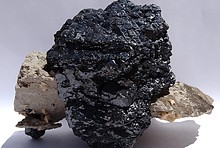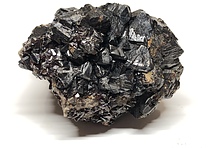Home PageAbout MindatThe Mindat ManualHistory of MindatCopyright StatusWho We AreContact UsAdvertise on Mindat
Donate to MindatCorporate SponsorshipSponsor a PageSponsored PagesMindat AdvertisersAdvertise on Mindat
Learning CenterWhat is a mineral?The most common minerals on earthInformation for EducatorsMindat ArticlesThe ElementsThe Rock H. Currier Digital LibraryGeologic Time
Minerals by PropertiesMinerals by ChemistryAdvanced Locality SearchRandom MineralRandom LocalitySearch by minIDLocalities Near MeSearch ArticlesSearch GlossaryMore Search Options
The Mindat ManualAdd a New PhotoRate PhotosLocality Edit ReportCoordinate Completion ReportAdd Glossary Item
Mining CompaniesStatisticsUsersMineral MuseumsClubs & OrganizationsMineral Shows & EventsThe Mindat DirectoryDevice SettingsThe Mineral Quiz
Photo SearchPhoto GalleriesSearch by ColorNew Photos TodayNew Photos YesterdayMembers' Photo GalleriesPast Photo of the Day GalleryPhotography
╳Discussions
💬 Home🔎 Search📅 LatestGroups
EducationOpen discussion area.Fakes & FraudsOpen discussion area.Field CollectingOpen discussion area.FossilsOpen discussion area.Gems and GemologyOpen discussion area.GeneralOpen discussion area.How to ContributeOpen discussion area.Identity HelpOpen discussion area.Improving Mindat.orgOpen discussion area.LocalitiesOpen discussion area.Lost and Stolen SpecimensOpen discussion area.MarketplaceOpen discussion area.MeteoritesOpen discussion area.Mindat ProductsOpen discussion area.Mineral ExchangesOpen discussion area.Mineral PhotographyOpen discussion area.Mineral ShowsOpen discussion area.Mineralogical ClassificationOpen discussion area.Mineralogy CourseOpen discussion area.MineralsOpen discussion area.Minerals and MuseumsOpen discussion area.PhotosOpen discussion area.Techniques for CollectorsOpen discussion area.The Rock H. Currier Digital LibraryOpen discussion area.UV MineralsOpen discussion area.Recent Images in Discussions
Mineral PhotographyAmscope eyepiece camera

29th Oct 2011 17:43 UTCHenry Barwood
29th Oct 2011 19:30 UTCTravis Olds Expert
I've used their 10 MP for some of my recent photos:
http://www.mindat.org/user-8894.html#2
The color of the photos ends up a little off and washed out on crystal reflections, but this might go away if you have a nice set up for lighting, which I don't.
Travis

29th Oct 2011 21:17 UTCHenry Barwood
29th Oct 2011 21:49 UTCTravis Olds Expert
The scope is from Amscope, Model SM-1T. When I find something I'd like to take an image of, I rack the focus up out of focus, and take as many pictures as I can bringing the focus down manually until the piece is underfocused (maybe 5 or 6 of them.) To explain the astigmatism, I guess I sacrifice having blurry edges so I can get a sharper image of the mineral of interest. When I try to make a composite image of the entire field in focus I've found the thing I wanted to image is blurrier, since I can only get so many images in doing it manually on a small crystal. I'm all ears on suggestions though on how to take a better photo.
Travis

29th Oct 2011 22:05 UTCHenry Barwood
There is nothing that you are doing wrong. I love CombineZ and stacking really improves both depth of field and apparent resolution. I won't get my camera for a week or so, but plan on using it on a Nikon SMZ-10 scope. I may also try it on Leitz and AO scopes just to check the compatibility. Once I've had a chance to check the optical match of these scopes, I'll get back with you with, perhaps, some suggestions.
From what I was able to gather from the Amscope literature, the coupling lens is a 0.5X negative lens (no idea if it is achromatic, etc). That may introduce distortion in various microscope configurations. I'm also concerned that the true resolution of the sensor is only around 1MP rather than 10MP. Manufacturers are getting very cagey announcing large MP cameras that are really based on small sensors and then use digiral interpolation to achieve the higher rating. Digital interpolation will not, repeat, will not, increase the actual resolution of a digital camera. You cannot make a 3000 X 2000 pixel imager out of one that actually only has 640 X 480 pixels




Mindat.org is an outreach project of the Hudson Institute of Mineralogy, a 501(c)(3) not-for-profit organization.
Copyright © mindat.org and the Hudson Institute of Mineralogy 1993-2024, except where stated. Most political location boundaries are © OpenStreetMap contributors. Mindat.org relies on the contributions of thousands of members and supporters. Founded in 2000 by Jolyon Ralph.
Privacy Policy - Terms & Conditions - Contact Us / DMCA issues - Report a bug/vulnerability Current server date and time: May 13, 2024 17:53:25
Copyright © mindat.org and the Hudson Institute of Mineralogy 1993-2024, except where stated. Most political location boundaries are © OpenStreetMap contributors. Mindat.org relies on the contributions of thousands of members and supporters. Founded in 2000 by Jolyon Ralph.
Privacy Policy - Terms & Conditions - Contact Us / DMCA issues - Report a bug/vulnerability Current server date and time: May 13, 2024 17:53:25










